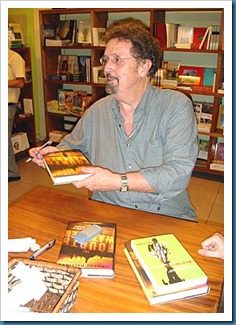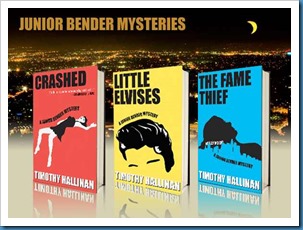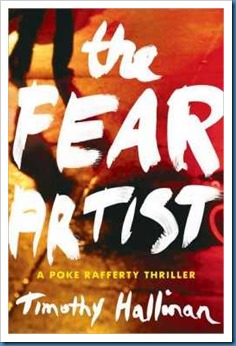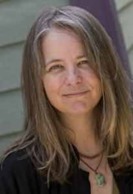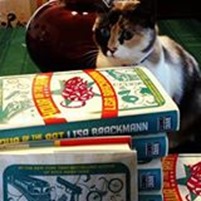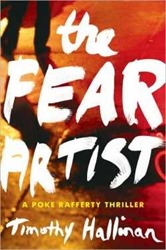
Frank Zappa said that writing about music is like dancing about architecture. To an extent that is a very true statement. Taking a piece of art that was expressed in one medium and trying to explain; examine it in another medium can be a daunting task. But in the hands of a knowledgeable and dedicated craftsman such as Alan Light it expands on the beauty of the subject piece. Alan Light is one of the foremost music journalists working today and has written a fascinating account of the making, remaking and unlikely popularization of one of the most played and recorded songs in recorded history. The Holy or the Broken: Leonard Cohen, Jeff Buckley, and the Unlikely Ascent of "Hallelujah" takes an in-depth look at the song and attempts to define its universal appeal. Today, it is one of the most covered rock songs in history, covered by literally hundreds of artists including U2, Bon Jovi, Justin Timberlake, Celine Dion, and Willie Nelson to name just a few. The song has been sung by numerous American Idol contestants, opera stars and punk bands. Decades after its creation it climbed into the Top Ten throughout Europe and Scandinavia. In 2008, different versions simultaneously held the number one and two positions on the UK Singles Chart, with Cohen’s original climbing into the Top 40 at the same time. Light focuses on, perhaps, the three most iconic interpretations of the song, Jeff Buckley, Rufus Wainwright and Leonard Cohen’s original delivery while at the same time, through interviews and discussions, examining the interpretations of the many other artists who have covered the song. From Bob Dylan to Bono and with input from other non-musical artists such as Salman Rushdie.
takes an in-depth look at the song and attempts to define its universal appeal. Today, it is one of the most covered rock songs in history, covered by literally hundreds of artists including U2, Bon Jovi, Justin Timberlake, Celine Dion, and Willie Nelson to name just a few. The song has been sung by numerous American Idol contestants, opera stars and punk bands. Decades after its creation it climbed into the Top Ten throughout Europe and Scandinavia. In 2008, different versions simultaneously held the number one and two positions on the UK Singles Chart, with Cohen’s original climbing into the Top 40 at the same time. Light focuses on, perhaps, the three most iconic interpretations of the song, Jeff Buckley, Rufus Wainwright and Leonard Cohen’s original delivery while at the same time, through interviews and discussions, examining the interpretations of the many other artists who have covered the song. From Bob Dylan to Bono and with input from other non-musical artists such as Salman Rushdie.
To get an idea of how many people have performed and listened to this song, you simply need go to YouTube. When you count up the number of times the song has been watched on the site by the various artists and in its numerous interpretations you’ll find that the total is well into the hundreds of millions.Yet, when Cohen presented his record company with the album, Various Positions in 1984, which included the song “Hallelujah” they turned the album down. What’s more they hated the song. In fact the record company thought so little of the song that it didn’t even make Leonard Cohen’s Greatest Hits. This song, which tortured Cohen for years in the writing, seemingly written to be forgotten some how broke through the judgment of the ‘suits’ to become one of the most recorded songs in music history. Alan Light delves into this Phoenix like rise from obscurity and explores the universal appeal of the song. The way it touches millions of listeners and how it was interpreted by so many important artists. Not all of them musicians.
Leonard Cohen, the singer-song writer, poet and novelist, is one of the most enigmatic and fascinating personages of the late ‘60s. Never having the goal of being a pop music super star, he has somehow retained an audience across four decades of music-making. With the exception of Bob Dylan and maybe Paul Simon, Leonard Cohen , in terms of influence, still captures the attention of critics and younger musicians more firmly than any other musical figure from the 1960s who is still working.
“Halleujah” Original Studio Version
Among the accolades this reclusive troubadour has garnered over the years are to win the Canadian Juno Award, Cohen has been inducted into the American Rock and Roll Hall of Fame and both the Canadian Music Hall of Fame and the Canadian Songwriters Hall of Fame. He is also a Companion of the Order of Canada, the nation's highest civilian honor. In 2011 Cohen received a Prince of Asturias Award for literature.
He was rowed down from the north in a leather skiff manned by a crew of trolls. His fur cape was caked with candle wax, his brow stained blue by wine - though the latter was seldom noticed due to the fox mask he wore at-all times. A quill in his teeth, a solitary teardrop a-squirm in his palm, he was the young poet prince of Montreal, handsome, immaculate, searching for sturdier doors to nail his poignant verses on.
Cohen published his first poems in 1954 after a stellar scholastic career. His first published book of poetry, Let Us Compare Mythologies was published in 1956. That was followed by The Spice-Box Of Earth
was published in 1956. That was followed by The Spice-Box Of Earth in 1961. Cohen continued to write poetry and fiction throughout much of the 1960s and preferred to live in quasi-reclusive circumstances after he bought a house on Hydra, a Greek island in the Saronic Gulf.
in 1961. Cohen continued to write poetry and fiction throughout much of the 1960s and preferred to live in quasi-reclusive circumstances after he bought a house on Hydra, a Greek island in the Saronic Gulf.
In Manhattan, grit drifted into his ink bottle. In Vienna, his spice box exploded. On the Greek island of Hydra, Orpheus came to him at dawn astride a transparent donkey and restrung his cheap guitar. From that moment on, he shamelessly and willingly exposed himself to the contagion of music. To the secretly religious curiosity of the traveler was added the openly foolhardy dignity of the troubadour. By the time he returned to America, songs were working in him like bees in an attic. Connoisseurs developed cravings for his nocturnal honey, despite the fact that hearts were occasionally stung. – Tom Robbins introduction speech for Leonard Cohen at The Rock And Roll Hall Of Fame
“Hallelujah” Jeff Buckley
By 1967, disappointed with his lack of financial success as a writer, Cohen moved to the United States and pursued a career as a folk music singer-songwriter. During the 1960s, he hung out on the fringe of Andy Warhol's "Factory" crowd. His song "
Suzanne" became a hit for
Judy Collins and was for many years his most covered song. After performing at a few folk festivals, he came to the attention of
Columbia Records representative
John H. Hammond who signed Cohen to a record deal.
Between 1967 and 1984 Columbia was to release some half dozen Leonard Cohen albums, most to outstanding critical acclaim, if not financial success. His music astounded the luminaries of the day and crossed generations from Bob Dylan to Kurt Cobain who once sang “Give me a Leonard Cohen afterworld / so I can sigh eternally,” in tribute to the only songwriter , many believe, who belongs in a class with Bob Dylan.
Yet for nearly ten years after the release of the album, and the song, it gained limited exposure with a few scattered covers versions filling up albums for a disparate list of artists. Then in 1994 Jeff Buckley performed the song on his album Grace . The album served as a pivot point for the song’s popularity. But even that presentation took a number of years to catch on with the listening public.
. The album served as a pivot point for the song’s popularity. But even that presentation took a number of years to catch on with the listening public.
Only then did the songs universal appeal become clear to artists and the public. And everybody had their own idea of what the song meant.
On the surface the song touches on the biblical stories of David and Samson, however the song is far from a pious hymn
offering such charged language as “I remember when I moved in you/ and the holy dove was moving too.” Yet, the single word chorus brings the focus back to the hymnlike chant of “hallelujah,” to contrast with the romantic. As Light says in the forward to the book, “..(it) raises an eternal pop music dilemma: are people really paying attention to all the words, and does it matter.”
Perhaps Salman Rushdie, no stranger to the near mythical power of words to transcend their dictionary meaning, said it best: (it’s) joyous and despondent, a celebration and a lament, a juxtaposition of dark Old Testament imagery with an irresistibly uplifting chorus, “Hallelujah” is an open-ended meditation on love and faith.”
Singer songwriter Brandi Carlile refers to the song as “the greatest song ever written,” and goes on to say that it provided her with the key to reconcile her Christian Faith and her homosexuality. “To me, it really outlines how people tend to misconstrue religion versus faith, she said. “I felt that this song was, in a real pure, realistic way, describing what ‘hallelujah’ actually is. ‘it’s not a cry that you hear at night/ It’s not somebody that’s seen the light’ – ‘hallelujah is not something that you shout out on Sunday in a happy voice; it’s something that happens in a way that’s cold and broken and lonely.”
Bon Jovi siad, “it’s got sexuality in the song right away, the chorus is like the climax the rest is foreplay.” But for Rabi Ruth Gan Kagan, who includes the song in the Yom Kippur service at the Nava Tehila congregation in Jerusalem, “it’s a hymn of the heretic, a piyut [liturgical poem] of a modern, doubtful person.” Justin Timberlake described the song to Light this way," “For some, it’s this ability of “Hallelujah” to contain multitudes, to embrace contradictions, that gives it such power.”
And it is that power that Light explores in detail throughout the book. He examines not only how the song was seemingly resurrected from a spurned album, what it means to so many artists, themselves not unfamiliar with the power of song. He charts it’s performance history, which surely lent to the songs acceptance and it’s ability to appeal not only to a wide variety of musicians in and endless list of genre, but it’s ability to touch so many different audiences among the listening public.
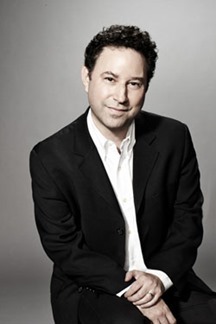 Light has an ability to look at this song from so many different perspectives and this book doesn’t leave any of those fascets unexplored. Yet, it’s not so steeped in musical terms, literary examination, nor irreverent or whimsical interviews with various artists that it loses the readers interest. Indeed, the readers will find themselves reading and wanting to listen to the song at the same time. You’ll have YouTube open, bios of the various artists, references to Light’s other work, and lyric’s on display in a webpage. Light will suck you into his thesis on this song which has been called I Ching of songwriting. Yet you don’t have to be a musicologist to follow along. Cohen himself said the song represents absolute surrender in a situation you cannot fix or dominate, that sometimes it means saying, “I don’t fucking know what’s going on, but it can still be beautiful.” That was the power Jeff Buckley’s version, had over a nation after the events of 9/11 when it was applied as a balm to grieving nation and again when it was a point of national pride when it served as the opening statement a the Olympic ceremonies of the 2010 games in Vancouver, Canada.
Light has an ability to look at this song from so many different perspectives and this book doesn’t leave any of those fascets unexplored. Yet, it’s not so steeped in musical terms, literary examination, nor irreverent or whimsical interviews with various artists that it loses the readers interest. Indeed, the readers will find themselves reading and wanting to listen to the song at the same time. You’ll have YouTube open, bios of the various artists, references to Light’s other work, and lyric’s on display in a webpage. Light will suck you into his thesis on this song which has been called I Ching of songwriting. Yet you don’t have to be a musicologist to follow along. Cohen himself said the song represents absolute surrender in a situation you cannot fix or dominate, that sometimes it means saying, “I don’t fucking know what’s going on, but it can still be beautiful.” That was the power Jeff Buckley’s version, had over a nation after the events of 9/11 when it was applied as a balm to grieving nation and again when it was a point of national pride when it served as the opening statement a the Olympic ceremonies of the 2010 games in Vancouver, Canada.
Cohens lyrics have always had a strikingly evocative and literary appeal. There is something of the French chansonnier in his style. Yet something that plays around with cabaret. The brooding, dark imagery, but with a knowing and humorous smile. All of that comes together in “Hallelujah” and Light, calling on his time as a fact checker with Rolling Stone in the late ‘80s used all that knowledge, all that experience in pulling this book together, yet the reader isn’t left feeling like it is an exhaustive book, but a labor of love.
The Dirty Lowdown
Copyright © 2013 Robert Carraher All Rights Reserved
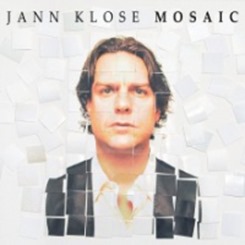
by Jann Klose rose by about 1000%.
is a film I had read about that is due for release this summer in select theaters with the DVD scheduled for release sometime in the near future. In my teenage years (and still to this day for that matter) I was a huge folk music fan starting with Bob Dylan, of course, and working my way through Dave Van Ronk, Bob Gibson, Pete Seeger and eventually to Tim Buckley who before his untimely death seemed poised on taking folk music to new realms incorporating psychedelia, funk, soul, avant-garde and jazz in his repertoire. But over the years, the Tim Buckley albums seemed to get pushed to the back shelves to gather dust. Until just recently.
which is a book about a Leonard Cohen song which was made popular by Tim Buckley’s son, Jeff. I reviewed the book here back on July 4th, if you’d care to look it up. So, naturally, I drug out the Tim Buckley albums and dusted them off and since I had run across the notice of the movie being made in my research for the Cohen review, I re-familiarized myself with his music. I was starting to feel like I was an actor in Six Degrees of Separation. Needless to say, I put the CD in the music system and sat back to give it a listen.
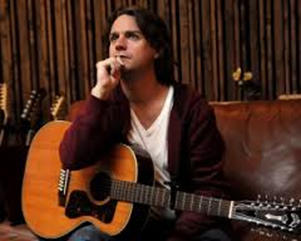 As much as the album features many different genres, it never feels like a “sampler” or a resume or a search for Klose’ musical identity. Instead it feels like a fully formed amalgamation, the forming of a artist from the many rhythmic, lyrical and musical tools that he has been exposed to and then melding them into a brand new whole with that torch of a voice. It didn’t hurt that in support of this ‘mosaic’ is Jann’s band, The Edukators. The Edukator’s are Chris Marolf on bass and banjo, Rob Mitzner and Patrick Carmichaelmon the skins, Lars Potteiger on various keyboards and accordion and Leah Potteiger on violin. Florian Opahle, who has played with Jethro Tull’s Ian Anderson and Greg Lake of King Crimson and Emerson, Lake & Palmer, contributes some sweet guitar parts as does David Bendeth. Tia Roper adds some chamber pop/ Baroque Rock flavored flute work on “The Kite” accompanied by Megan Marolf (Roger Waters, Phillip Glass) on oboe. The production work was left to the ever capable Grammy Winner James Frazee who has produced Esperanza Spalding, Blondie, and My Morning Jacket. David Bendeth coproduced and besides the lyrics written with Klose on “Know What’s Right” his production resume sports the names Paramore, Bruce Hornsby and Elvis Presley. Along with mastering by double Grammy-winner Warren Russell-Smith, they made of Mosaic an intelligent, soulful, melodic and stunning piece of ear candy.
As much as the album features many different genres, it never feels like a “sampler” or a resume or a search for Klose’ musical identity. Instead it feels like a fully formed amalgamation, the forming of a artist from the many rhythmic, lyrical and musical tools that he has been exposed to and then melding them into a brand new whole with that torch of a voice. It didn’t hurt that in support of this ‘mosaic’ is Jann’s band, The Edukators. The Edukator’s are Chris Marolf on bass and banjo, Rob Mitzner and Patrick Carmichaelmon the skins, Lars Potteiger on various keyboards and accordion and Leah Potteiger on violin. Florian Opahle, who has played with Jethro Tull’s Ian Anderson and Greg Lake of King Crimson and Emerson, Lake & Palmer, contributes some sweet guitar parts as does David Bendeth. Tia Roper adds some chamber pop/ Baroque Rock flavored flute work on “The Kite” accompanied by Megan Marolf (Roger Waters, Phillip Glass) on oboe. The production work was left to the ever capable Grammy Winner James Frazee who has produced Esperanza Spalding, Blondie, and My Morning Jacket. David Bendeth coproduced and besides the lyrics written with Klose on “Know What’s Right” his production resume sports the names Paramore, Bruce Hornsby and Elvis Presley. Along with mastering by double Grammy-winner Warren Russell-Smith, they made of Mosaic an intelligent, soulful, melodic and stunning piece of ear candy.
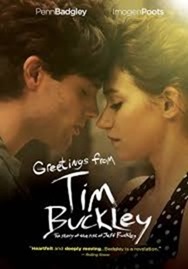
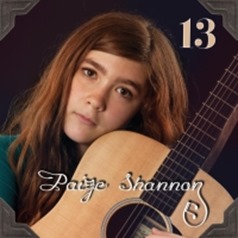
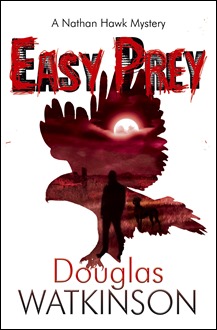
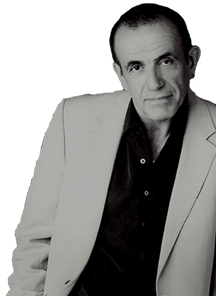

 Lisa Brackmann
Lisa Brackmann